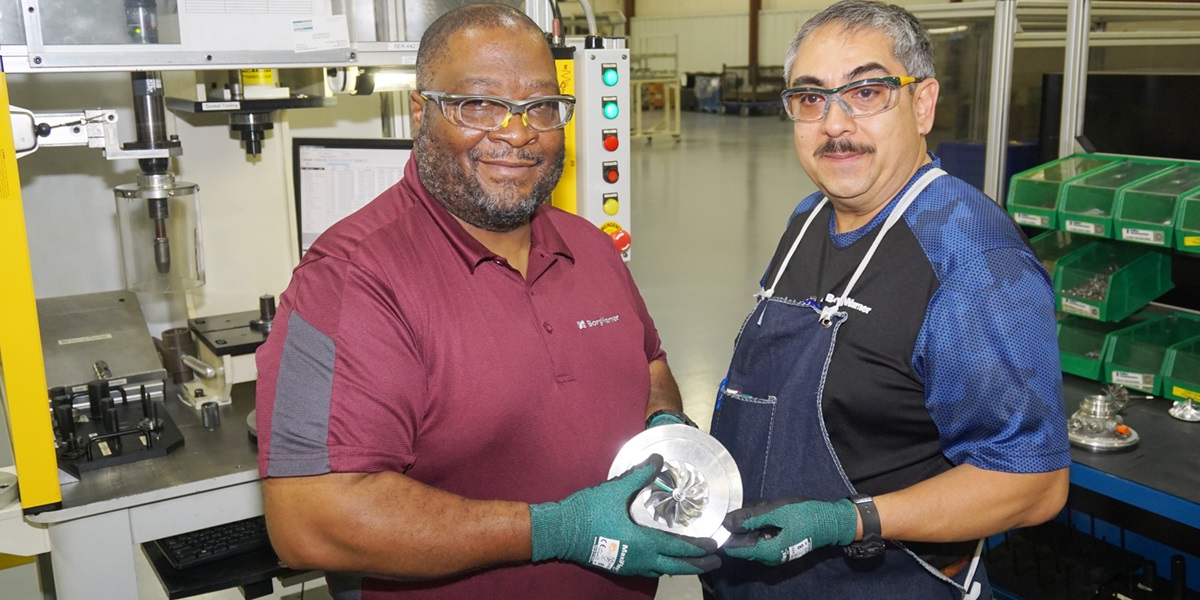
BorgWarner's Turbo Technology Developed In Unique Location
September 11, 2017 | By Bruce Martin, INDYCAR
(A version of this story originally appeared as exclusive content on the Verizon INDYCAR Mobile app.)
A drive down Brevard Road in western North Carolina is typical of these parts. Just off Interstate 26 near Asheville, it's a winding two-lane road trailing alongside the French Broad River.
About a mile to the south is the Blue Ridge Parkway, one of the most scenic routes in America, which runs 469 miles through North Carolina and Virginia, linking the Great Smoky Mountains National Park in North Carolina to Shenandoah National Park in Virginia.
It runs along the spine of the Blue Ridge Mountains – where the speed limit is 35-45 mph so tourists can take in the spectacular views – a reminder of the natural wonders of this part of the United States. Nearby, however, lies a facility with a much higher top-end speed in mind.
BorgWarner Turbo Systems is the manufacturing facility where every turbocharger in used in Verizon IndyCar Series competition, including the Indianapolis 500, is built. BorgWarner turbochargers allow Indy cars to travel 200 mph faster on the Indianapolis Motor Speedway oval than the speed limit on the Blue Ridge Parkway.
The BorgWarner facility is also 36 miles from Tryon, North Carolina, home to famed sculptor William Behrends, who since 1990 has created the bas relief likeness of every driver on the iconic Borg-Warner Trophy that honors each Indianapolis 500 winner in history.
A tour of BorgWarner Turbo Systems helps bring to light the precision and detail that goes into developing the turbochargers made for INDYCAR racing, as well as those for production vehicles and commercial vehicles in industries including mining, construction and agriculture.
The Verizon IndyCar Series turbocharger takes exhaust gases from the engine – supplied by Chevrolet or Honda – into a turbine housing that spins a turbine wheel on a common shaft. A compressor wheel on the other end of the shaft draws in fresh air from the air filter, pressurizing that air and feeding it into the engine. This process, in conjunction with the fuel system, allows for a massive increase in engine power.
The 425,000-square-foot facility in Arden has more than 600 employees, but Ray Jones and Francisco Luvenanos are the ones who hand-assemble each turbocharger used in the Verizon IndyCar Series. The two men assemble more than 200 turbochargers a year.
Compare that to the 400,000 turbochargers robotically made annually at the plant for other uses and it emphasizes the importance of the work performed by Jones and Luvenanos. They take pride in their effort.
“Before I came to BorgWarner, I really didn't know much about IndyCar racing,” Jones told the Verizon INDYCAR Mobile App. “But to know my work helps them win races, I feel really good about it.”
And who is his favorite driver? Seeing Takuma Sato win the 101st Running of the Indianapolis 500 presented by PennGrade Motor Oil in person this past May made that easy.
“I'm pretty fond of him,” Jones said of Sato. “That was my very first Indianapolis 500 that I actually attended. It was amazing – a whole, out-of-body experience with the sights and the sounds. We got to meet the drivers and walked around the pit area and toured the garage area.
“We met Takuma and to see him win it, that was amazing. And the most amazing part about it is my turbocharger was in his car that won the race. I feel pretty good about it. It gives me a sense of accomplishment that I played a role in that victory. I like to think that I'm a part of that.”
Jones and Luvenanos operate as a well-oiled team in the massive facility.
“Francisco does all of my prep work, the compressor covers and the turbine housing,” Jones said. “I'm final assembly. Every single one of them – handcrafted. We are able to track each and every part that goes into each turbocharger.”
Making the turbochargers by hand, Jones can decide on the spot if a part has a minor defect, and the results back up his expertise. There have been no turbocharger failures in the Verizon IndyCar Series since BorgWarner became the exclusive supplier in 2012.
The company's Indy car roots trace to Louis Schwitzer, who as a driver won the first race held at Indianapolis Motor Speedway in 1909. Schwitzer later served as chairman of the IMS technical committee from 1919-45.
He began the Schwitzer Corporation, based in Indianapolis, in 1919, which was acquired by BorgWarner in 1999. The Louis Schwitzer Award – sponsored by BorgWarner – is given annually for engineering excellence and innovation related to the Indianapolis 500.
The company commissioned creation of the famed Borg-Warner Trophy in 1935, with its debut presentation to Indy 500 winner Louis Meyer the following year. When Sato’s likeness is added to the sterling silver trophy this fall, it will bear the likenesses of all 101 race winners plus two winning co-drivers and late IMS owner Anton “Tony” Hulman Jr.
For Luvenanos, a native of Mexico, the direct connection to the Verizon IndyCar Series has him excited to follow the racing.
“It's turned me into an INDYCAR fan,” he said.